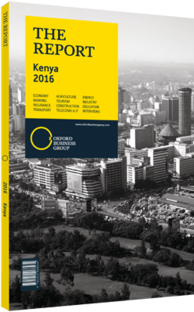Cecilia Malmström, EU Trade Commissioner: Interview

Interview: Cecilia Malmström
What were the sticking points during the negotiation of the 2014 economic partnership agreement (EPA) with the EAC?
CECILIA MALMSTRÖM: If I had to list the three main issues that the negotiations had to resolve, I’d say they all revolved around the development dimension of the partnership that we were seeking.
First of all, the agreement had to be adapted to the ambitious regional integration project being pursued by the EAC. We also had to ensure that the timing worked. We solved this by the EU agreeing to give the EAC the time they needed to get their project in place.
Secondly, the partnership required a set of rights and obligations that would take into account the partners’ differing levels of development and reflect their aspirations in the Cotonou Agreement. So the EU granted free access to its market for EAC exports while accepting that the EAC will keep in place some of its restrictions on imports. The agreement included a clause covering the risk of the EAC favouring the EU’s competitors, as well as a clear link to the sustainable development aspirations and essential elements of the Cotonou Agreement, such as human rights, democracy and the rule of law.
Thirdly, the development dimension includes development cooperation, and this was a top priority for the EAC. The “Economic and Development Cooperation” section details how existing funding can be used to make the most of the EPA, and how the EU and its member states can support the regional integration of the EAC through their development programmes.
What can be done to help the EAC meet key import requirements for the EU, such as sanitary and phytosanitary (SPS) measures?
MALMSTRÖM: It’s true that the EU has a very sophisticated system for protecting consumers, especially when it comes to food. There can be no compromising on consumer protection. We make sure that any measures on plant and animal health and hygiene and on food are non-discriminatory, transparent and science-based. The EPA promotes dialogue and offers the possibility to deal with any issues that come up through the most appropriate body.
In fact, the EPA devotes an entire chapter to SPS. In it, both sides agree to work together to help a greater number of EAC products comply with EU and international standards. This includes things like helping to harmonise standards, promoting capacity in the public and private sectors, technical assistance, training and information exchange.
Of course, meeting EU import requirements goes beyond SPS. We’ve adopted a two-pronged approach to tackle broader issues. First, the EPA’s trade rules will contribute to the EAC’s reform agenda and to improving the business environment. Second, EU development assistance will focus on EAC implementation of these rules by supporting production capacity, improving competitiveness and strengthening EAC capacity. Both tracks will help the EAC to meet key import requirements for the EU.
What impact will the liberalisation of EU imports have on the ability of EAC member states to increase local value-addition and manufacturing?
MALMSTRÖM: Let me stress that liberalisation has a positive impact on local industries by lowering the cost of essential inputs used by EAC producers and exporters. Of course, the competitiveness of EAC industry is affected by much more complex issues and requires producers and governments to address a range of challenges. Barriers to trade, transport and communication need to go down and international standards have to be met. The EPA offers a lot of opportunities for cooperation in such areas. It’s up to the public and private sectors in EAC countries to undertake the reforms needed to implement the EPA successfully so as to reap maximum benefit from it.
You have reached the limit of premium articles you can view for free.
Choose from the options below to purchase print or digital editions of our Reports. You can also purchase a website subscription giving you unlimited access to all of our Reports online for 12 months.
If you have already purchased this Report or have a website subscription, please login to continue.

